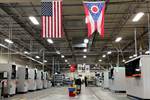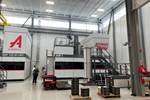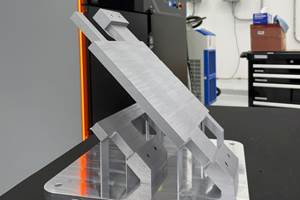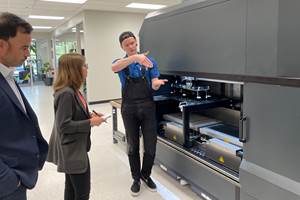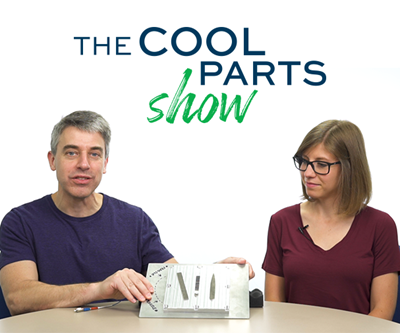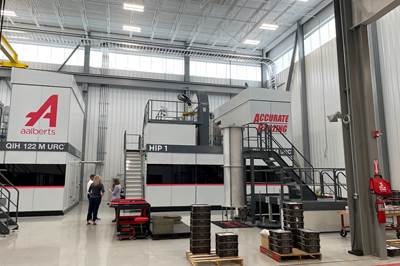When watching a metal 3D printer in action or looking at a full build of intricate parts, it can be easy to overlook the build plate providing the foundation for these possibilities. After all, build plates tend to be relatively simple items — flat pieces of metal with just a couple of bolt holes and few other features.
“You think a build plate is a build plate,” says Chris Prue, applications development manager at United Performance Metals (UPM) Additive. “Well, it is and it isn’t.”
Despite its relative simplicity, the build plate can literally make or break the 3D print on top of it. An uneven plate can cause collisions with the recoater, or throw off the position of the build; a plate that is too thin might warp in process, damaging the print or applying so much torque to the bolts that they shear off and damage the part or machine.
Even as additive manufacturers recognize these potential issues, build plate management too often becomes an afterthought. Additive manufacturing is the core competency and lucrative activity for these companies, and so time spent on build plates becomes a necessary evil. But at UPM, build plates — and other underappreciated aspects of production AM at scale — are the top priority.
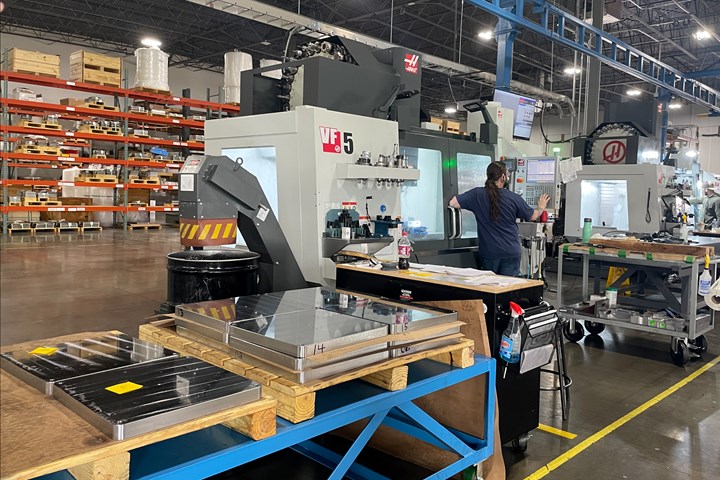
At United Performance Metals Additive in Hamilton, Ohio, build plates for metal AM are the focus, not an afterthought. The company provides build platform production, resurfacing and inventory management services for this critical part of the process. Now, it has its sights set on becoming a one-stop additive solutions provider for multiple workflow steps surrounding the 3D printing.
From Barstock to Build Plates
Part of O’Neal Industries (ONI), United Performance Metals is a global provider of high-performance metal products in formats including sheet metal, barstock and coil. These materials are typically supplied into industries such as sheet metal fabrication and machining; UPM Additive is a new business under this umbrella, formed to provide services to additive manufacturing businesses beginning with build plates.
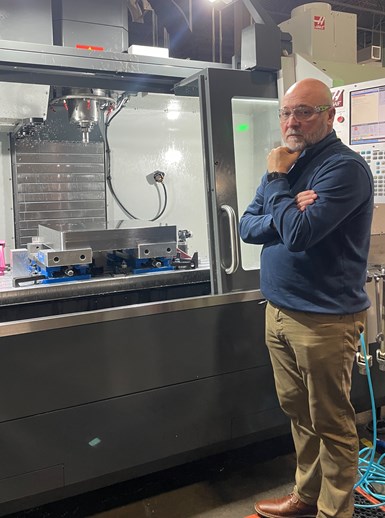
UPM had no machining capacity of its own when a customer requested build plates in 2019, JJ Johnson recalls. Now the company has a facility with wire EDM machines, Blanchard grinders and CNC milling machines like the one shown here.
“This business originates from a single customer. In 2019 they asked, can you make us some build platforms?” recounts JJ Johnson, general manager of additive solutions. “At the time UPM had no machining capacity, but we provided the metal and coordinated the production with a contract manufacturer.”
That exchange opened the company to the potential opportunities in the growing additive manufacturing space. In 2020, UPM began providing and managing build plates for a handful of manufacturing customers. In 2021, United Performance Metals Additive was formed as a new division within UPM, and began installing its own machining equipment in a space on the company's Hamilton, Ohio, campus to produce new build plates and resurface used ones. Business has grown exponentially since, with the division tripling its customer base year over year since inception and also more than doubling its topline revenue year over year.
“Programs” are how UPM Additive now thinks of and packages its services, which have expanded now into full-service build plate inventory management. A program for a client might include everything from new build plate production to part cut-off to build plate resurfacing. When a plate becomes too thin or out of tolerance, the company removes it from rotation with that customer and replaces it with a new one. For a couple of its local customers, UPM even handles build plate inventory directly, visiting the facility to assess needs and deliver new plates during “milk runs” done on a regular basis.
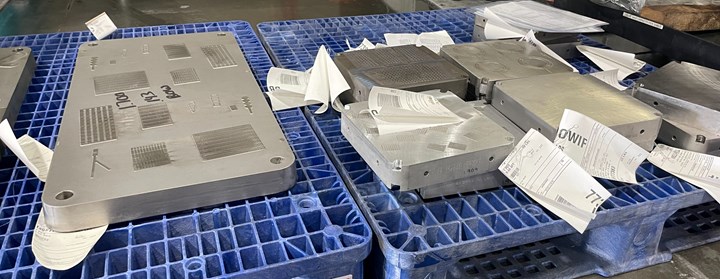
Used build plates arriving at UPM often look like this, with remnants of the supports that held 3D printed parts still attached. Some customers even send the parts still on the build plate; UPM uses wire EDM to cut them off before proceeding to refinish the platform.
Build plates might arrive empty or with parts still attached; in the case of the latter, UPM cuts the parts from the plate using wire EDM. Then, the plate is measured before being ground flat on a Blanchard grinder. Other features are added or retouched using CNC milling. Every dimension of the plate is checked to assure 100% conformance to the print before it leaves the facility. Each build platform is also shipped with an inspection report.”
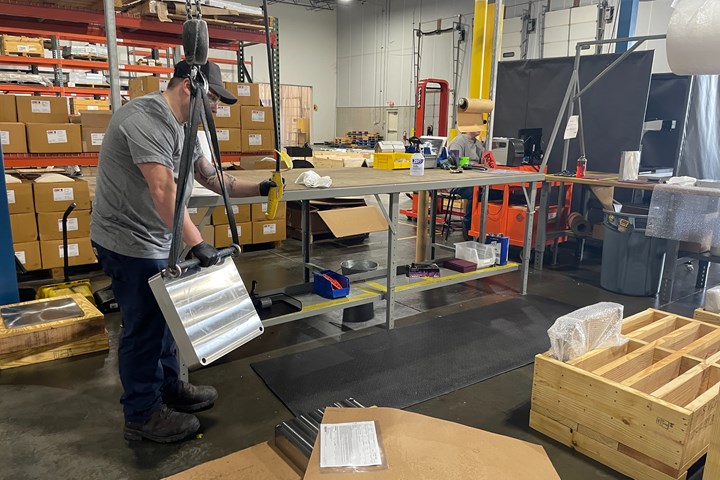
UPM uses custom wooden crates for shipping build plates to and from customer sites. It may seem like a small touch, but details like this set the company apart from other contract manufacturers without its laser-focus on this product.
As a finishing touch, UPM notes the current thickness of the plate on its side before loading it into custom-built crates for shipping back to the customer. Every plate that passes through the facility is serialized and tracked. When it returns, UPM records how much material was removed and other factors relevant to its lifespan, data that is being used to improve predictability for build plate life. A plate typically lasts between 10-15 cycles, though the number might be lower for a particularly large or thick plate that repeatedly absorbs a large amount of energy in the printing process.

Every build plate that passes through UPM Additive is laser-marked with a serial number for traceability. The company records the plate’s thickness each time it returns for refinishing, and preemptively replaces plates nearing the end of their lifespan.
Building Toward Scale
Aside from supporting additive users by allowing them to outsource various aspects of build plate management, UPM Additive sees its role as an aid to scale. More printers and more parts inevitably mean more build plates, and therefore more machining capacity and workforce to handle the increase. Keeping up can be a challenge to AM users that try to manage build plates internally, but with a partner like UPM, those users can instead focus their resources on additive production.
Johnson and Prue recount one particularly challenging client that had lost track of the status of its build plates. UPM brought three truckloads of plates back to its facility, sorted them by material with an XRF gun and evaluated the state of each one. They removed plates that were no longer viable, then cataloged the ones that were and filled out the inventory with new ones. Now, that customer has a turnkey solution in collaboration with UPM; the company provides a rolling forecast of its upcoming production, and UPM provides the build plate inventory necessary. Employees no longer have to sift through shelves of build plates and assess them individually to find what they need.
“Operators were touching seven different plates on average previously,” Prue says. “Now, the technician only needs to handle one.”
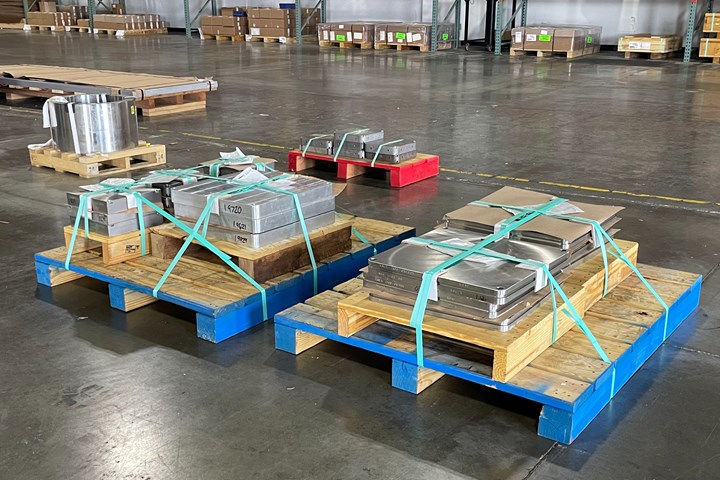
There is a wide variety of build plate sizes, styles and materials currently in use in additive manufacturing, and UPM serves customers using many of these types. The numbers visible on some of the build plates represent a low-tech solution to keeping operators informed regarding the thickness or height of each plate.
“We're helping customers eliminate their non-core competency activities, so they can do just what they want to do,” Prue says. Customers include Cincinnati-area companies as well as key aerospace, medical and tooling manufacturers across the country. Total build plate inventory for a given customer can range from 20 plates to 100 or more, depending on the needs of the operation (though Prue points out that customers are welcome to try the service with less than their full inventory).
There’s a cost to UPM’s services, of course, but “How much does it cost if you don't have a build plate when you need it?” Prue asks. “We have blanks and finished plates on the shelf, and we can help predict and schedule future needs. It’s a way to lower risk. Our goal is you’ll never reach for a build plate and find it’s not there.”
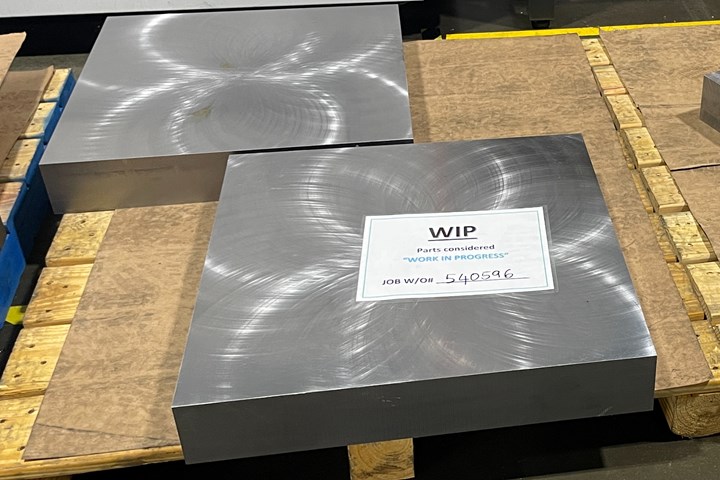
New build plates begin as masters acquired by UPM Additive’s parent company. Blanks are cut to size with extra stock allowances via waterjet before they arrive at the Hamilton facility for final grinding and machining operations. These ground but not yet machined plates are destined for use in large-format laser powder bed fusion at an aerospace parts producer.
UPM is also able to offer improved, more tailored build plates compared to off-the-shelf options or those made by a machine shop not specialized in this product. Although all build plates serve essentially the same purpose, there are an astounding variety used by additive manufacturers today. They range in size, shape and material (including aluminum, nickel, titanium and even copper), but also in symmetry and features. Some plates are reversable and the same on both sides, while others might require special features on the bottom for integration with that specific printer. And because UPM produces new build plates to order, customers often ask for their own customizations to aid with handling or fixturing down the line.
“We might have 10 customers all using the same printer models, but they all want something a little bit different,” Johnson says. “Our hope is that eventually we can take all that input and create build plates that satisfy everyone. We’re not there yet.”
Beyond the Build Plate
UPM’s build plate management business is growing, and the company continues to improve this service; it is currently in talks with software providers to help automate more of the lifecycle tracking process. But UPM is also looking beyond the build plate for additional additive needs to fill, focusing on customer-driven solutions and growing into a role as a one-stop additive solutions provider. It is already producing wear components such as hard recoater blades (which it resurfaces) and other additive-consumable items.
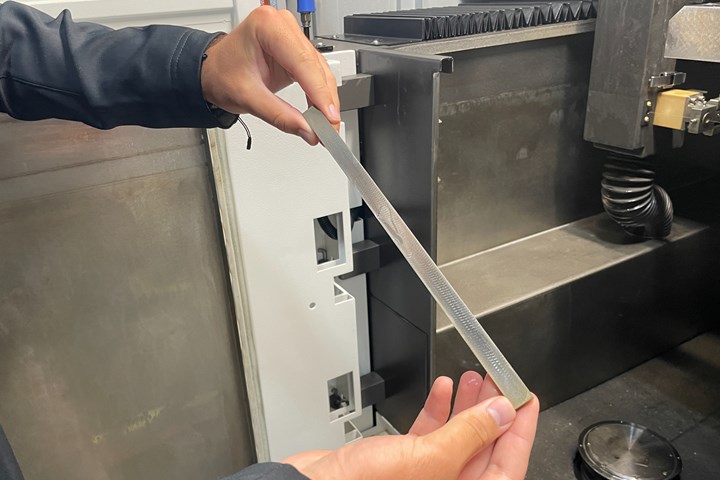
This recoater blade blank is cobalt chrome, actually 3D printed by the customer who will use it. UPM will perform finish machining to make this an operational blade replacement.
Next steps for the company will include adding more capacity for production and maintenance of these items, as well as additional postprocessing steps to support metal additive manufacturing. Stress relief and heat treat could be a natural fit for UPM; the company is hoping to partner with a furnace company to bring this equipment in-house. Support removal, finish machining and more could follow.
Down the road, UPM anticipates it could leverage its material access and expertise into providing more of the raw material for 3D printing including metal powders. Wire the company produces is already used in directed energy deposition (DED) processes. A new atomizer coming online soon will be supplied by UPM feedstock, and the Additive arm will help distribute some of this powder to be made in small quantities.
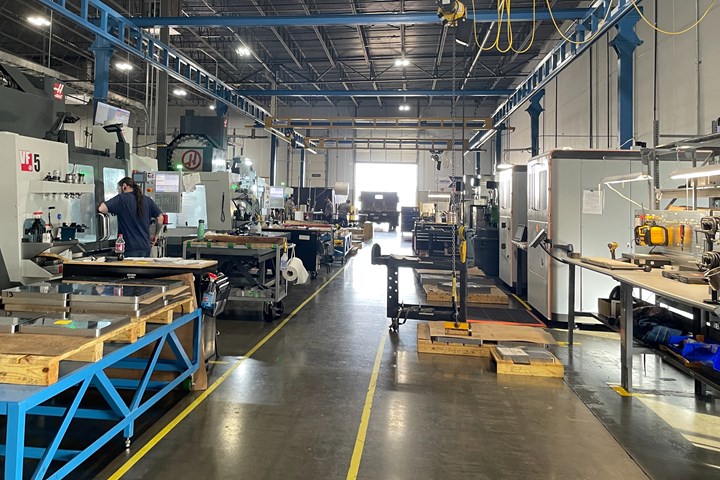
United Performance Metals Additive is well-equipped for build plate production, part cut off, refinishing and inventory management today. Future additions to this facility could include a heat-treat furnace and more machining capacity dedicated to finishing parts rather than build platforms.
The one operation UPM has no intention of pursuing is 3D printing itself. With so many manufacturers now moving to scale production with this technology, the company is content to support its customers with the many auxiliary processes that AM at scale demands.
“We want to be a one-stop shop for everything but the print,” Prue says.
Related Content
What Does AM Want? Here Are 4 Aims (Maybe 5) That Additive Manufacturing Is Driving Toward
Certain freedoms and contributing factors allow additive manufacturing to realize its full promise for production.
Read MoreA Framework for Qualifying Additively Manufactured Parts
A framework developed by The Barnes Global Advisors illustrates considerations and steps for qualifying additively manufactured parts, using an example familiar to those in AM: the 3D printed bottle opener.
Read MoreAdditive Manufacturing Is Subtractive, Too: How CNC Machining Integrates With AM (Includes Video)
For Keselowski Advanced Manufacturing, succeeding with laser powder bed fusion as a production process means developing a machine shop that is responsive to, and moves at the pacing of, metal 3D printing.
Read MoreAdditive Manufacturing's Evolving Role at Fathom Now Emphasizing Bridge Production
Bridge production is currently the biggest opportunity for additive manufacturing, says Fathom Manufacturing co-founder Rich Stump. How this service provider leverages AM while finding balance with other production capabilities.
Read MoreRead Next
Can 3D Printing Make a Better AM Build Plate?: The Cool Parts Show #5
Ultrasonic metal additive manufacturing was used to create a build plate aimed at making powder bed fusion more effective. This episode of The Cool Parts Show looks at a part by AM, for AM.
Read MoreWhen Additive Manufacturing Becomes Business As Usual
Medical implant manufacturer Tangible Solutions has had its share of growing pains to arrive at full-scale production via AM. But now, the company’s challenges are those that any contract manufacturer might recognize.
Read MoreIt’s HIP to Be Additive: Advancing 3D Printed Metals with Hot Isostatic Pressing
Aalberts Surface Technologies-Accurate Brazing is preparing to serve additive manufacturing tomorrow by proving out HIPing recipes at its Center of Excellence today.
Read More

.jpg;width=70;height=70;mode=crop)

